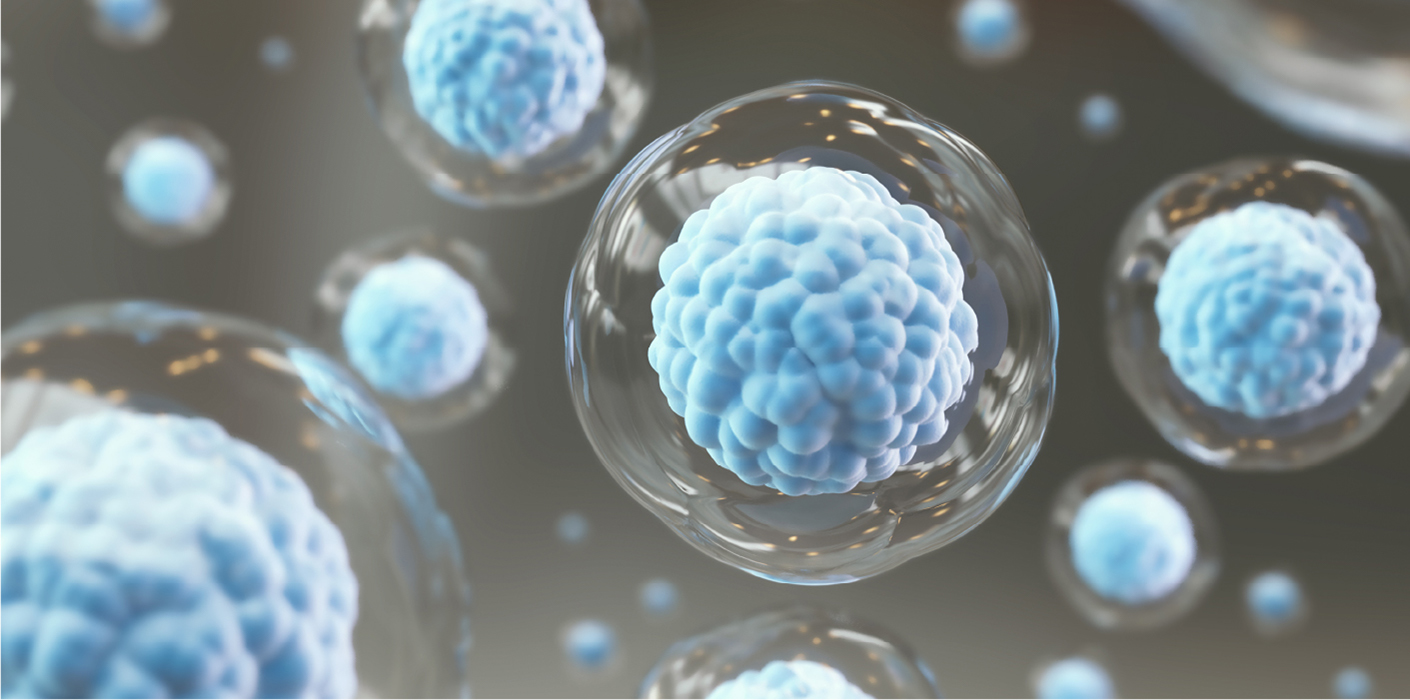The power of stem cells in the wound healing process
Wound healing is a physiologic, well-orchestrated and complex process divided into inflammation, proliferation and remodelling phases which culminate in wound closure and in the formation of normal skin tissue.1 Depending on the lesion extension and other factors, abnormal wound healing characterized by prolonged inflammation and excessive accumulation of extracellular matrix components such as collagen can occur, leading to scarring.2
Scars, such as hypertrophic and atrophic scars, keloids and stretch marks, regardless of their appearance, have a strong aesthetic, social and psychological impact.3 Thereby, the pursuit of scar reduction and wound treatments has led to the continued exploration of new strategies.
Stem cells have the unique ability to self-renew (generate perfect copies of themselves upon division) and differentiate (produce specialized cell types that perform specific functions in the body).4 Stem cell-based therapies have emerged as promising strategies to potentiate skin tissue repair. In fact, recent studies have described various types of stem cells providing significant benefits during wound healing and minimising the visual appearance of dermal scar tissue by providing antioxidants, attenuating inflammation and reducing collagen deposition.2,5–7 Stem cells are able to produce potent anti-inflammatory agents named cytokines that trigger a faster course in skin regeneration.8 These small molecules are able to ameliorate scar formation by decreasing the stress levels in skin cells and by promoting skin cell proliferation and differentiation.9
KELO.CELL Biogel combines the bioactive factors extracted from stem cells which have been shown to enhance hydration and decrease inflammation with a novel silicone gel formulation that prevents dryness and the loss of skin elasticity to reduce the appearance of scars.
1. Rodrigues M, Kosaric N, Bonham CA, et al. Wound Healing: A Cellular Perspective. Physiol Rev 2019; 99: 665.
2. Li Q, Zhang C, Fu X. Will stem cells bring hope to pathological skin scar treatment? Cytotherapy 2016; 18: 943–956.
3. Marshall CD, Hu MS, Leavitt T, et al. Cutaneous Scarring: Basic Science, Current Treatments, and Future Directions. Adv Wound Care 2018; 7: 29.
4. Birbrair A. Stem Cell Microenvironments and Beyond. Adv Exp Med Biol 2017; 1041: 1–3.
5. Kim WS, Park BS, Sung JH. The wound-healing and antioxidant effects of adipose-derived stem cells. Expert Opin Biol Ther 2009; 9: 879–887.
6. Kosaric N, Kiwanuka H, Gurtner GC. Stem cell therapies for wound healing. https://doi.org/101080/1471259820191596257 2019; 19: 575–585.
7. Guillamat-Prats R. The Role of MSC in Wound Healing, Scarring and Regeneration. Cells; 10. Epub ahead of print 1 July 2021. DOI: 10.3390/CELLS10071729.
8. Ennis WJ, Sui A, Bartholomew A. Stem Cells and Healing: Impact on Inflammation. Adv Wound Care 2013; 2: 369.
9. Xiao T, Yan Z, Xiao S, et al. Proinflammatory cytokines regulate epidermal stem cells in wound epithelialization. Stem Cell Res Ther 2020; 11: 1–9.
-
How to prevent and treat post-infection scarring?
A clinical study showed that infected wounds were related with worse cosmetic rating after a 30-day follow-up. Also, scar revision surgery was more likely considered in patients with infected wounds.
2 min. read
Read more -
The Psychological Impact of Visible Scars
If small injuries heal without leaving a mark, almost every wound leaves a scar. Whether they are small or big, dark, pale, raised or flatten, scars may negatively affect our self-esteem and confidence, especially the most visible ones.
2 min. read
Read more



